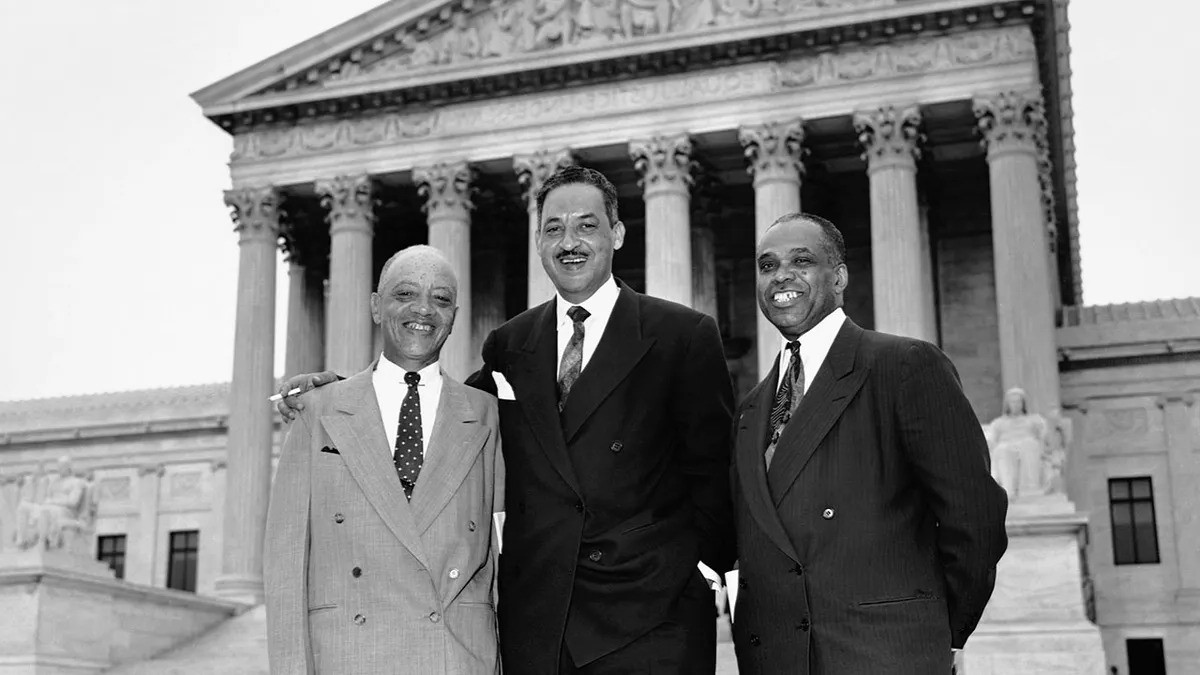
Brown vs. Board of Education stands as a pivotal moment in American history, marking the end of legal segregation in public schools. This landmark Supreme Court case, decided in 1954, challenged the "separate but equal" doctrine established by Plessy vs. Ferguson in 1896, arguing that segregation in public schools created a sense of inferiority among African-American children. This case not only reshaped the education system but also played a crucial role in the civil rights movement, setting the stage for further legal and social reforms. With its profound impact on society and law, understanding Brown vs. Board of Education is essential for grasping the complexities of racial equality and the fight for justice in the United States. Here are 15 facts that illuminate the significance of this historic ruling, shedding light on its context, challenges, and the enduring legacy it leaves behind.
The Landmark Case: Brown v. Board of Education
Brown v. Board of Education is one of the most significant Supreme Court cases in American history. It fundamentally changed the landscape of public education and civil rights. Here are some fascinating facts about this landmark case.
-
The Case Was a Consolidation
Brown v. Board of Education wasn't a single lawsuit. It was a consolidation of five different cases from Kansas, South Carolina, Virginia, Delaware, and Washington D.C. All these cases challenged the constitutionality of racial segregation in public schools. -
Named After Oliver Brown
The case was named after Oliver Brown, one of the plaintiffs from Topeka, Kansas. He was chosen as the lead plaintiff because his name was alphabetically first among the group. -
Thurgood Marshall's Role
Thurgood Marshall, who later became the first African American Supreme Court Justice, was the chief attorney for the plaintiffs. He argued the case on behalf of the NAACP (National Association for the Advancement of Colored People). -
Separate but Equal Doctrine Overturned
The Supreme Court's decision in Brown v. Board of Education overturned the "separate but equal" doctrine established by the 1896 Plessy v. Ferguson case. This doctrine had allowed racial segregation as long as the separate facilities were equal. -
Unanimous Decision
The Supreme Court's decision was unanimous. All nine justices agreed that racial segregation in public schools was unconstitutional. -
Psychological Impact Evidence
The plaintiffs used social science evidence to argue their case. Psychologists Kenneth and Mamie Clark's "doll tests" showed that segregation negatively affected African American children's self-esteem and sense of worth. -
Chief Justice Earl Warren's Influence
Chief Justice Earl Warren played a crucial role in the unanimous decision. He worked tirelessly to ensure all justices were on board, emphasizing the importance of a united front against segregation. -
Implementation Delays
Despite the ruling, many schools, especially in the South, delayed implementing desegregation. Some states even enacted laws to resist the decision. -
Brown II
A year after the original decision, the Supreme Court issued a follow-up ruling known as Brown II. This decision ordered schools to desegregate "with all deliberate speed," though the vague wording allowed for further delays. -
Massive Resistance Movement
In response to the ruling, some Southern states launched the "Massive Resistance" movement. This included closing public schools and opening private, all-white academies to avoid desegregation. -
Little Rock Nine
The Little Rock Nine were a group of African American students who enrolled in Little Rock Central High School in 1957. Their enrollment was a direct result of the Brown v. Board of Education decision, though they faced intense opposition and required federal intervention to attend classes. -
Civil Rights Movement Catalyst
The Brown v. Board of Education decision served as a catalyst for the Civil Rights Movement. It inspired further actions and legal challenges aimed at ending racial discrimination in various aspects of American life. -
Legacy in Education
The case laid the groundwork for future educational reforms. It highlighted the importance of equal access to quality education for all children, regardless of race. -
Commemorative Sites
Several sites related to the case have been preserved as historical landmarks. The Monroe Elementary School in Topeka, Kansas, where Linda Brown attended, is now a National Historic Site. -
Ongoing Relevance
The principles established in Brown v. Board of Education continue to influence discussions about educational equity and civil rights. The case remains a touchstone in the ongoing struggle for racial justice in America.
A Final Look at Brown vs. Board of Education
Brown vs. Board of Education stands as a monumental decision in American history, reshaping society and the legal landscape. This landmark case not only challenged but dismantled the doctrine of "separate but equal," setting a precedent for future civil rights advancements. Its impact extends beyond classrooms, influencing generations and encouraging a continuous fight for equality and justice. As we reflect on this pivotal moment, let's remember the courage of those involved and the ongoing struggle for civil rights. Their efforts remind us of the power of legal action and collective resolve in confronting and overcoming systemic discrimination. Brown vs. Board of Education isn't just a chapter in history books; it's a beacon guiding us toward a more inclusive and equitable future. Let's carry forward its legacy, ensuring equal opportunities for all, regardless of race or background.
Was this page helpful?
Our commitment to delivering trustworthy and engaging content is at the heart of what we do. Each fact on our site is contributed by real users like you, bringing a wealth of diverse insights and information. To ensure the highest standards of accuracy and reliability, our dedicated editors meticulously review each submission. This process guarantees that the facts we share are not only fascinating but also credible. Trust in our commitment to quality and authenticity as you explore and learn with us.


